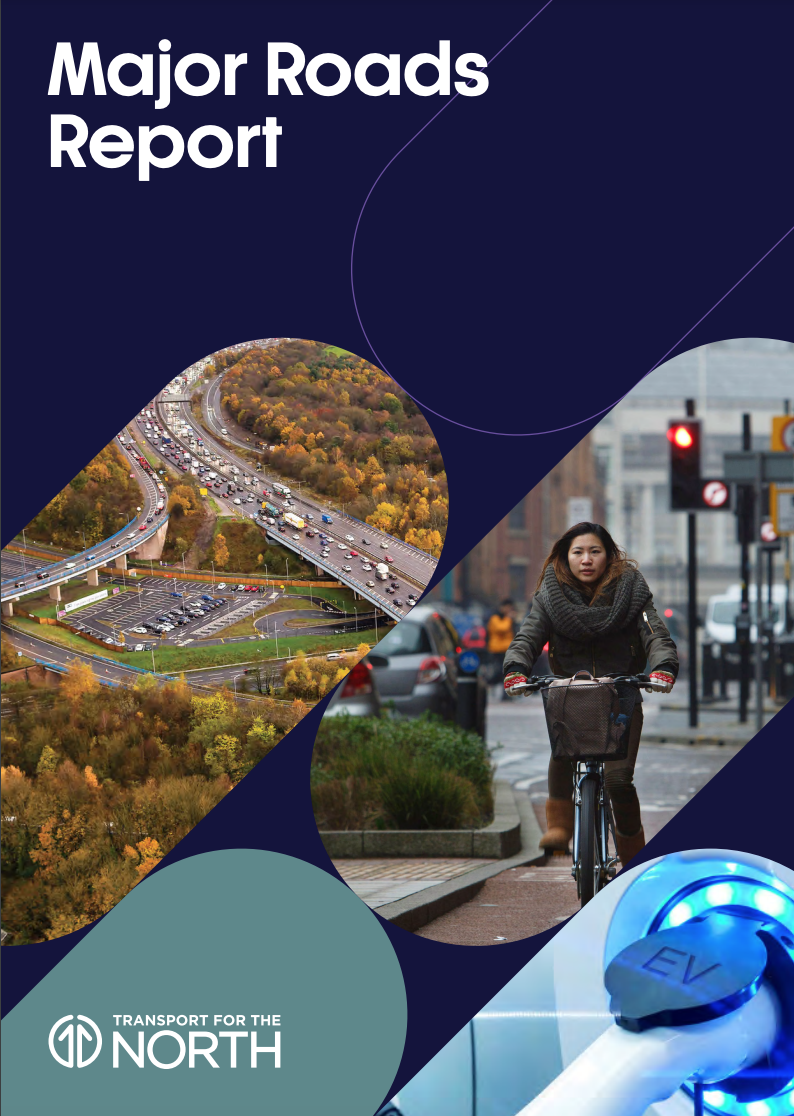TfN Major Roads Report points to doing things differently
Transport for the North has published its Major Roads Report for the north of England, setting out the role the region’s highways have to play as part of an efficient, effective and multimodal transport network.
The report highlights how highways, which include footpaths and cycle ways as well as roads, are part of every journey taken and essential for getting to work, school and leisure opportunities, and for the deliveries needed to the region’s homes and businesses.
It sets out the scale of the challenge of enhancing road safety and reducing environmental impact and aligns to the recently published Transport Decarbonisation Strategy for the North of England. That strategy, and the Major Roads Report, state that policy measures to reduce travel by car, and future investment to make the use of our roads less carbon intensive, will be vital in meeting ambitious emission reduction targets.
TfN analysis of what is required to meet the goal of near-zero carbon emissions from surface transport in the north of England by 2045 suggests that action needs to be taken now. Key conclusions are achieving that target requires 55% of all new car sales to be zero emission vehicles by 2025 and the distance travelled by car, van and HGV must be reduced.
Martin Tugwell, chief executive of Transport for the North, said, “In the last century motorised transport revolutionised our way of life, and as we move towards the second quarter of the 21st century our highways will continue to be a fundamental part of our transport system.
“However, as we look to address climate change, we will need to make choices about how we use the available highway space, with greater priority given to pedestrians, cyclists and public transport. We will also need to consider and agree on how we will pay for investment and indeed on how we pay to use our roads. We need to do things differently, but at the same time ensure that our way forward does not disadvantage those for whom travel by car is the only practical option.
“If we’re to have that debate then we must seize the opportunity to look at how the relative cost of motoring, bus travel and rail travel influences the choices we make. For only by looking at transport in the round will we be able to ensure that our investment choices are sustainable for the longer term.
“As the ‘one voice’ for the north, TfN is committed to ensuring that our roads are fit for purpose. We will work with government and its agencies to identify a way forward that is fair and sustainable, as part of a multimodal transport system that is truly fit for purpose.”
TfN’s Major Roads Report also sets out a baseline on current road usage. It reveals that:
97% of personal journeys in the north of England use highways
Of these, 61% are by car or taxi, 26% walking, 9% on buses and 2% cycling
Just under 90% of car trips are under 10km
88% of freight movements in our region use roads
Commuting and business trips account for around one-third of carbon emissions from cars
In the north of England, more than 95% of the 26 million tonnes of transport-related carbon emissions per year are from road transport
On average, rural residents drive more than twice as far per year as people living in urban areas and are more dependent on private transport to access jobs, education, and other essential services.
Click here to download the full Transport for the North Major Roads Report.

